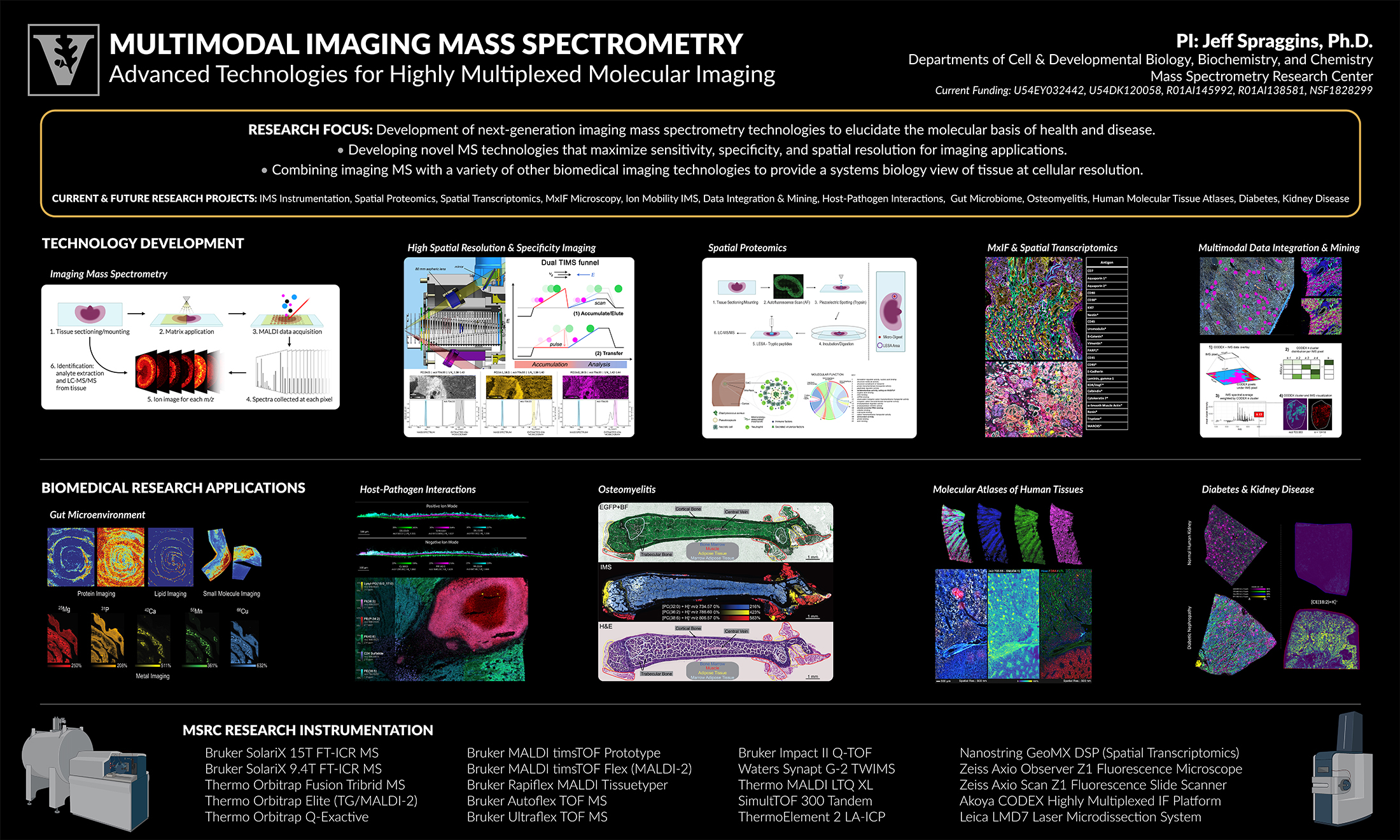
Jeffrey Spraggins, Ph.D.
Associate Professor of Cell and Developmental Biology
Associate Professor of Biochemistry
Associate Professor of Chemistry
Associate Professor of Pathology, Microbiology and Immunology
Member of the Mass Spectrometry Research Center
- : jeff.spraggins@vanderbilt.edu
- : 615-343-7333
- :
V9283 Medical Research Building III
- : Lab Website
Our research group develops advanced imaging mass spectrometry and integrated multimodal molecular imaging technologies capable of providing a systems biology view of the tissue microenvironment that spans a wide range of molecular classes (e.g. metabolites, lipids, proteins, genes) and spatial scales (e.g. single cells, functional tissue units, whole organs). We are applying these advanced technologies to better understand critical biomedical research areas such as infectious disease and diabetes.
Research Description
The primary focus of our research group is the development of next-generation imaging mass spectrometry (IMS) technologies to elucidate the molecular basis of health and disease. Modern instrumentation and computing capabilities have enabled researchers to move beyond reductionist biology and, instead, probe how the components of biological entities (e.g. molecules, cells, and tissues) interact to reveal the underlying biology of disease. This systems biology approach has been accelerated by advancements in high-throughput ‘omics’ technologies, however, genetic and molecular information are only part of the story. The challenge lies in understanding how these parts interact and how perturbations to the system relate to disease.
Molecular imaging effectively offers a ‘blueprint’ as to how biological components work together by providing spatial context to molecular information. From the advent of the complex microscope in the late 1600s to modern modalities such as magnetic resonance, positron emission tomography, and advanced microscopy, imaging technologies have always been at the forefront of our understanding of biochemistry and biology. However, relative to the new -omics technologies, these classical biomedical imaging technologies have limited molecular specificity. Mass spectrometry-based imaging now finds itself uniquely positioned to bridge the gap between the information rich genomics, proteomics, and metabolomics approaches and biomedical imaging technologies. IMS combines the molecular specificity of mass spectrometry with the spatial fidelity of classical histology to create molecular maps of tissues. Broadly, my research falls into two categories: (1) Developing novel mass spectrometry technologies to maximize imaging performance enabling molecular histology at cellular resolution and (2) combining imaging mass spectrometry with a variety of other biomedical imaging technologies to create new integrated modalities capable of providing a systems biology view of tissue at cellular resolution. We are applying these advanced technologies to better understand critical biomedical research areas such as infectious disease and diabetes.
Postdoctoral Positions Available
We are looking for postdoctoral candidates to join our team to develop and apply multimodal 2-D and 3-D molecular imaging technologies. Multiple projects are available, including developing MALDI imaging instrumentation, highly multiplexed IF microscopy, spatial transcriptomics, spatially driven multi-omics, tissue processing and preparation methods, and computational data integration and mining tools. These projects involve constructing molecular atlases of human tissues and understanding the molecular drivers of host-pathogen interactions and diabetes.
View Larger Version of Poster
